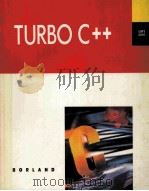《absolute c++ second edition P945》
| 作者 | 编者 |
|---|---|
| 出版 | 未查询到或未知 |
| 参考页数 | |
| 出版时间 | 没有确切时间的资料 目录预览 |
| ISBN号 | 无 — 求助条款 |
| PDF编号 | 820554158(仅供预览,未存储实际文件) |
| 求助格式 | 扫描PDF(若分多册发行,每次仅能受理1册) |
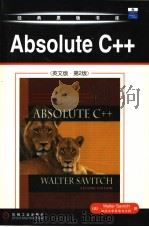
Chapter 1C++ BASICS1
1.1 INTRODUCTION TO C+2
Origins of the C++ Language2
C++ and Object-Oriented Programming3
The Character Of C+++3
C++ Terminology y4
A Sample C++ Program y4
1.2 VARIABLES, EXPRESSIONS, AND ASSIGNMENT STATEMENTS6
Identifiers6
Variables8
Assignment Statements10
Pitfall: Uninitialized Variables12
Tip: Use Meaningful Names13
More Assignment Statements13
Assignment Compatibility14
Literals15
Escape Sequences17
Naming Constants17
Arithmetic Operators and Expressions19
Integer and Floating-Point Division21
Pitfall: Division and whole Number22
Type Casting23
Increment and Decrement Operators25
Pitfall: Order of Evaluation27
1.3 CONSOLE NPT/OUPU28
output Using cout28
New Lines in Output29
Tip: End Each Program with \n or endl30
Formaing for Numbers with a Decimal Point31
Output with cerr32
Input Using cin32
Tip: Line Breaks in l/O34
1.4PROGRAM STYLE35
Comments35
1.5LIBRARIES AND NAMESPACES36
Libraries and include Directives36
Namespaces37
Pitfall: Problems with Libra Names38
Chapter Summa38
Answers to Self-Test Exercises39
Programming Projects41
Chapter 2 FLOW Of CONTROL45
2.1 BOOLEAN EXPRESSION46
Building Boolean Expressions46
Pitfall: Strings of Inequalities47
Evaluating Boolean Expressions48
Precedence Rule50
Pitfall: Integer Values Can Be Used as Boolean Values54
2.2 BRANCHING MECHANISMS57
if-else Statements57
Compound Statements57
Pitfall: Using in Place of - -59
Omiing the else61
Nested Statement62
Multiway if-else Statement62
The switch Statement62
Pitfall: Forgeing a break in a switch Statement66
Tip: Use switch Statements for Menu66
Enumeration Types66
The Conditional Operation67
2.3 LOOPS69
The while and do-while Statements69
Increment and Deement Operators Revisited72
The Comma Operator75
The for Statement76
Tip: Repeat-N-Times Loops79
Pitfall: Extra Semicolon in a for Statement79
Pitfall: infinite Loops80
The break and continue Statement83
Nested Loops86
Chapter Summa86
Answers to Self-Test Exercises87
Programming Projects92
Chapter 3 FUNCTION BASICS95
3.1 PREDEFINED FUNCTIONS96
Predefined Funions That Retu a Value96
Predefined void Functions101
A Random Number Generator103
3.2 PROGRAMMER-DEFINED FUNCTIONS108
Defining Functions That Return a Value108
Alternate Form for Function Declarations111
Pitfall: Arguments in the Wrong Order m111
Pitfall: Use the Terms Parameterand Argument in111
Functctions Calling Functions112
Example: A Rounding Function112
Functions That Return a Boolean Value114
Defining void Functions115
retuct Statements in void Funions117
Preconditions and Postconditions119
main is a Function119
Recursive Functions120
3.3 SCOPE RULES121
Local Variables122
Procedural Abstraion122
Global Constants and Global Variables125
Blocks128
Nested Scopes129
Tip: Use Funion Calls in Branching and Loop Statements129
Variables Declared in a for Loop130
Chapter Summary131
Answers to Self-Test Exercises131
Programming Projects135
Chapter 4 PARAMETERS AND OVERLOADING139
4.1 PARAMETERS140
Call-by-Value Parameters140
A Fit Look at Call-by-Reference Parameters143
Call-by-Reference Mechanism in Detail145
Constant Reference Parameters147
Example: The swapValues Function148
Tip: Think of Actions, Not Code149
Mixed Parameter Lists150
Tip: What Kind of Parameter to Use151
Pitfall: Inadvertent Local Variables152
Tip: Choosing Formal Parameter Names155
Example: Buying Pizza155
4.2 OVERLOADING AND DEFAULT ARGUMENTS158
Introduction to overloading159
Pitfall: Automatic Type Conversion and Overloading161
Rules for Resolving overloading163
Example: Revised Pizza-Buying Program164
Default Arguments167
4.3 TESTING AND DEBUGGING FUNCTIONS169
The assert Mao169
Stubs and Drivers170
Chapter Summary176
Answers to Self-Test Exercises176
Programming Projects176
Chapter5 ARRAYS181
5.1 INTRODluCTION TO ARRAYS182
Declaring and Referencing Arrays182
Tip: Use for Loops with Aays185
Pitfall: Aay Indexes Always Sta with Zero185
Tip: Use a Defined Constant for the Size of an Aay185
Aays in Memo186
Pitfall: Aay Index Out of Range187
Initializing Aays189
5.2 ARRAYS IN FUNCTIONS191
Indexed Variables as Funion Arguments191
Entire Aays as Funion Arguments193
TheconstParameter Modifier196
Pitfall: Inconsistent Use of const Paramete198
Functions That Retum an Array198
Example: Production Graph199
5.3 PROGRAONG WITH ARRAYS204
Paially Filled Arrays204
Tip: Do Not Skimp on Formal Paramete205
Example: Searching an Array207
Example: Soing an Array210
5.4 MULTIDlAENSIONAL ARRAYS214
Multidimensional Array Basics214
Multidimensional Array Parameters216
Example: Two-Dimensional Grading Program217
Chapter Summa222
Answers to Self-Test Exercises223
Programming Projects227
Chapter 6 STRUCTURES AND CLASSES235
6.1 STRUCTURES236
Structure Types238
Pitfall: Forgeing a Semicolon in a Structure Definition242
Structures as Function Arguments242
Tip: Use Hierarchical Structures243
Initializing Structures246
6.2 CLASSES249
Defining Classes and Member Functions249
Encapsulation254
Public and Private Members255
Accessor and Mutator Functions259
Tip: Separate Interface and implementation261
Tip: A Test for Encapsulation262
Structures versus Classes263
Tip: Thinking Objects265
Chapter Summary265
Answers to Self-Test Exercises266
Programming Projects268
Chapter 7 CONSTRUCTORS AND OTHER TOOLS271
7.1CONSTRUCTORS272
ConstructoTDefinitions272
Pitfall: Constructors with No Arguments277
Explicit Constructor Calls279
Tip: Always Include a Default Constructor279
Example: BonkAccount Class282
Class Type Member Variables288
7.2MORE TOOLS291
The const Parameter Modifier292
Pitfall: Inconsistent Use of const294
Inline Functions298
Static Members299
Nested and Local Class Definitions304
7.3VECTORS—A PREVIEWS OF THE STANDARD TEMPLATE LIBRARY304
Vector Basics305
Pitfall: Using Square Brackets beyond the Vector Size308
Tip: Vector Assignment Is Well Behaved309
Efficiency Issues309
Chapter Summa311
Answers to Self-Test Exercises311
Programming Projects314
Chapter 8 OPERATOR OVERLOADING, FRIENDS, AND REFERENCES317
8.1BASIC OPERATOR OVERLOADING318
Overloading Basics319
Tip: A Constructor Can Return an Object324
Returning by const Value325
Tip: Retuing Member Variables of a Class Type328
Overloading Una Operators329
Overloading as Members Functions330
Tip: A Class Has Access to All its objects332
Overloading Function Application ( )333
Pitfall: Overloading , ll, and the Comma Operator334
8.2FRIEND FUNCTIONS AND AUTOMATk TYPE CONVERSION334
Constructors for Automatic Type Conversion334
Pitfall: Member Operators and Automatic Type Conversion335
Friend Functions336
Pitfall: Compilers without Friends340
Friend Classes340
8.3REFERENCES AND MORE OVERLOADED OPERATORS342
References342
Pitfall: Returning a Reference to Ceain Member Variables343
Overloading and344
Tip: What Mode of Retued Value to Use351
The Assignment Operator353
Overloading the Increment and Deement Operato354
Overloading the Array operator357
Overloading Based on L-Value veus R-value359
Chapter Summa359
Answers to self-Test Exercises360
Programming Projects362
Chapter 9 STRINGS367
9.1 AN ARRAY TYPE FOR STRINGS368
C-String Values and C-String Variables369
Pitfall:Using and- with C-Strings373
Other Functions in
C-String Input and Output379
9.2 CHARACTER MANIPULATION TOOLS382
Character l/O382
The Member Functions get and put382
Example: Checking Input Using a Newfine Function385
Pitfall: Unexpected \n in Input386
The putback, peek, and ignore Member Functions388
Character-Manipulating Functions390
Pitfall: toupper and tolower Retu int Values392
9.3THE STANDARD CLASS string394
Introduction to the Standard Class string394
l/O with the Class string396
Tip: More Versions of getline401
Pitfall: Mixing cin variable; and getline401
String Processing with the Class string402
Example: Palindrome Testing406
Converting between string Objes and C-Strings411
Chapter Summa411
Answers to Self-Test Exercises412
Programming Projes415
Chapter 10 POINTERS AND DYNAMIC ARRAYS421
10.1 POINTERS422
Pointer Variables423
Basic Memo Management431
Pitfall: Dangling Pointers434
Dynamic Variables and Automatic Variables434
Tip: Define Pointer Types435
Pitfall: Pointers as Call-by-Value Parameters437
Uses for Pointers439
10.2 DYNAMIC ARRAYS439
Array Variables and Pointer Variables439
Creating and Using Dynamic Aays441
Example: A Function That Retus an Aay445
Pointer Arithmetic447
Multidimensional Dynamic Aays448
10.3 CLASSES POINTERS AND DYNAC ARRAYS451
The -> Operator451
The this Pointer452
Overloading the Assignment Operator453
Example: A Class for Paially Filled Aays456
Destructors463
Copy Constructors465
Chapter Summary469
Answers to Self-Test Exercises470
Programming Projects472
Chapter 11 SEPARATE COMPILATION AND NAMESPACES475
11.1SEPARATE COMPILATION476
Encapsulation Reviewed477
Header Files and Implementation Files478
Example: DigitalTime Class486
Tip: Reusable Components487
Using #ifndef487
Tip: Defining Other Libraries490
11.2NAMESPACES491
Namespaces and using Directives491
Creating a Namespace493
Using Declarations496
Qualifying Names498
Tip: Choosing a Name for a Namespace500
Example: A Class Definition in a Namespace501
Unnamed Namespaces502
Pitfall: Confusing the Global Namespace and the Unnamed Namespace509
Tip: Unnamed Namespaces Replace the static Qualifer509
Tip: Hiding Helping Functions509
Nested Namespaces510
Tip: What Namespace Specification Should You Use?510
Chapter Summa514
Answers to Self-Test Exercises514
Programming Projects516
Chapter 12 STREAMS AND FILE l/O519
12.1 l/O STREAMS521
File l/O521
Pitfall: Restrictions on Stream Variables526
Appending to a File526
Tip: Another Syntax for Opening a File528
Tip: Check That a File Was Opened Successfully529
Character l/O532
Checking for the End of a File533
12.2 TOOLS FOR STREAM l/O537
File Names as Input537
Formaing output with Stream Functions538
Manipulators542
Saving Flag Seings543
More Output Stream Member Functions544
Example: Cleaning Up a File Format546
Example: Editing a Text File548
12.3STREAM HIERARCHIES: A PREVIEW OF INHERITANCE551
Inheritance among Stream Classes551
Example: Another newline Function553
12.4RANDOM ACCESS TO FILES557
Chapter Summa559
Answe to Self-Test Exercises559
Programming Projects562
Chapter 13 RECURSION571
13.1RECURSIVE void FUNCTIONS573
Example: Vertical Numbers573
Tracing a Recursive Call576
A Closer look at Recuion579
Pitfall: Infinite Recursion580
Stacks for Recuion582
Pitfall: Stack overflow584
Recursion versus iteration584
13.2 RECURSIVE FUNCTIONS THAT RETURN A VALUE585
General Form for a Recursive Function That Retus a Value585
Example: Another Powers Function586
13.3 THINKING RECURSIVELY591
Recursive Design Techniques591
Bina Search592
Chapter Summa601
Answe to Self-Test Exercises601
Programming Projects606
Chapter 14 INHERITANCE609
14.1 INHERITANCE BASICSDerived Classes610
Constructo in Derived Classes620
Pitfall: Use of Private Member Variables from the Base Class622
Pitfall: Private Member Functions Are Effectively Not Inherited624
The protected Qualifier624
Redefinition of Member Functions627
Redefining veus Overloading629
Access to a Redefined Base Function630
Functions That Are Not Inherited631
14.2 PROGRAMANING WITH INHERITANCE633
Assignment Operato and Copy Constructors in Derived Classes633
Destructors in Derived Classes634
Example: Paially Filled Array with Backup634
Pitfall: Same Object on Both Sides of the Assignment Operator643
Example: Alteate Implementation of PFArrayDBak644
Tip: A Class Has Access to Private Membe of All Objects of the Class647
Tip: “Is a” versus “Has a”647
Protected and Private Inheritance648
Multiple Inheritance649
Chapter Summa650
Answe to Self-Test Exercises650
Programming Projects652
Chapter15 POLYMORPHISM AND VIRTUAL FUNCTIONS655
15.1VIRTUAL FUNCTION BASICS656
LAte Binding656
Virtual Functions in C+++657
Tip: The Virtual Property Is Inherited664
Tip: When to Use a Virtual Function664
Pitfall: Omiing the Definition of a Virtual Member Function665
Abstract Classes and Pure Viual functions665
Example: An Abstract Class667
15.2 POINTERS AND VIRTU FUNCTIONS669
Virtual Functions and Extended Type Compatibility669
Pitfall: The Slicing Problem674
Tip: Make Destructo Viual675
Downcasting and Upcasting676
How C++ Implements Viual Functions678
Chapter Summa679
Answe to Self-Test Exeises679
Programming Projects680
Chapter 16 TEMPLATES683
16.1FUNCTION TEMPLATES684
Syntax for Function Templates686
Pitfall: Compiler Complitions689
Tip: How to Define Templates690
Example: A Generic Soing Funion692
Pitfall: Using a Template with an Inappropriate Type696
16.2 CLASS TEMPLATES698
Syntax for Class Templates698
Example: An Aay Template Class703
The vector and basic-string Templates709
16.3 TEMPALTES AND INHERITANCE709
Example: Template Class for a Partially Filled Array with Backup710
Chapter Summary716
Answers to Self-Test Exercises716
Programming Projects720
Chapter 17 LINKED DATA STRUCTURES721
17.1 NODES AND LINKED LISTS723
Nodes723
Linked Lists728
Inserting a Node at the Head of a List730
Pitfall: Losing Nodes733
Inseing and Removing Nodes Inside a List734
Pitfall: Using the Assignment Operator with Dynamic Data Structures738
Searching a Linked List738
Example: A Generic Soing Template Version of Linked List Tools743
17.2LINKED LIST APPLICATIONS747
Example: A Stack Template Class748
Example: A Queue Template Class755
Tip: A Comment on Namespaces758
Friend Classes and Similar Alternatives759
17.3 ITERATORS762
Pointers as Iterators762
Iterator Classes763
Example: An Iterator Class764
17.4 TREES771
Tree Propeies772
Example: A Tree Template Class775
Chapter Summa780
Answers to Self-Test Exercises780
Programming Projects788
Chapter18 EXCEPTION HANDLING793
18.1EXCEPTION HANDLING BASICS795
A Toy Example of Exception Handling795
Defining Your Own Exception Classes804
Multiple Throws and Catches806
Pitfall: Catch the More Specific Exception First808
Tip: Exception Classes Can Be Trivial809
Throwing an Exception in a Function810
Exception Specification810
Pitfall: Exception Specification in Derived Classes814
18.2PROGRAMMING TECHNIQUES FOR EXCEPTION HANDLING815
When to Throw an Exception815
Pitfall: Uncaught Exceptions817
Pitfall: Nested try-catch Blocks817
Pitfall: overuse of Exceptions818
Exception Class Hierarchies818
Testing for Available Memo818
Rethrowing an Exception819
Chapter Summa819
Answers to Self-Test Exercises820
Programming Projects821
Chapter19 STANDARD TEMPLATE LIBRARY823
19.1 ITERATORS825
Iterator Basi825
Kinds of Iterators831
Constant and Mutable Iterators834
Revee Iterators836
Pitfall: Compiler Problems838
Other Kinds of Iterato838
19.2 CONTAINERS839
Sequential Containers839
Pitfall: Iterato and Removing Elements844
Tip: Type Definitions in Containers844
The Container Adapters stack and queue845
The Associative Containe set and nap846
Efficiency851
19.3 GENERc: ALGORITHMS853
Running Times and Big-ONotation854
Container Access Running Times858
Nonmodifying Sequence Algorithms859
Modifying Sequence Algorithms863
Set Algorithms865
Soing Algorithms865
Chapter Summa867
Answers to Self-Test Exercises868
Programming Projects870
Chapter 20 PATENS AND UML875
20.1 PATTERNS876
Adapter Patte877
The Model-View-Controller Paern877
Example: A Soing Pattern879
Efficiency of the Soing Pattern885
Tip: Pragmatics and Paes886
Pattern Formalism886
20.2 UML887
Histo of UML887
UML Class Diagrams888
Class Interactions889
Chapter Summa889
Answe to Self-Test Exercises889
Programming Projects891
Appendix 1 C+++ Keywords893
Appendix 2 Precedence of operators895
Appendix 3 The ASCII Character Set899
Appendix 4 Some Libra Functions901
Arithmetic Funions901
Input and Output Member functions902
Charaer Functions903
C-String Functions904
string Class Functions906
Random Number Generator907
Trigonometric functions908
Appendix5 Old and New Header Files909
Further Reading911
lndex913
《absolute c++ second edition P945》由于是年代较久的资料都绝版了,几乎不可能购买到实物。如果大家为了学习确实需要,可向博主求助其电子版PDF文件。对合法合规的求助,我会当即受理并将下载地址发送给你。
高度相关资料
-

- Absolute Age Determination
- 1990 Springer
-
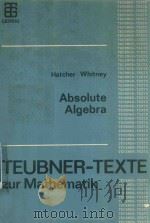
- ABSOLUTE ALGEBRA
- WHITNEY"
-
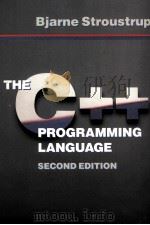
- THE C++ PROGRAMMING LANGUAGE SECOND EDITION
- 1991 ADDISON-WESLEY PUBLISHING COMPANY
-
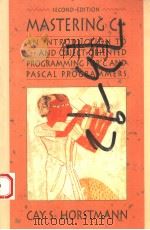
- MASTERING C++ SECOND EDITION
- 1996年 JOHN WILEY AND SONS
-
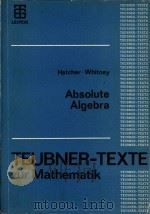
- Absolute Algebra
- 1978 BSB Teubner
-

- A HISTORY OF MODERN INDONESIA SINCE C.1300 SECOND EDITION
- 1993 STANFORD UNIVERSITY PRESS
-
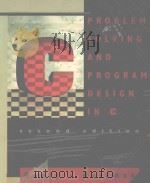
- PROBLEM SOLVING AND PROGRAM DESIGN IN C SECOND EDITION
- 1996 ADDISON-WESLEY PUBLISHING COMPANY
-
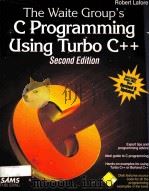
- THE WAITE GROUP'S PROGRAMMING USING TURBO C++ SECOND EDITION
- 1993 SAMS PUBLISHING
-
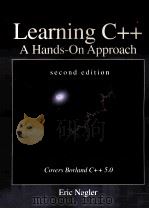
- LEARNING C++ A HANDS-ON APPROACH SECOND EDITION
- 1993 WEST PUBLISHING COMPANY
-
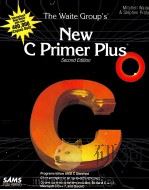
- THE WAITE GROUP‘S NEW C PRIMER PLUS SECOND EDITION
- 1993 SAMS PUBLISHING
-
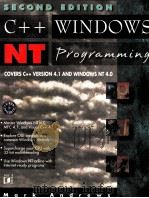
- C++ WINDOWS NT PROGRAMMING SECOND EDITION
- 1996 M&T BOOKS
-
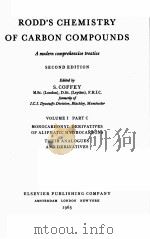
- RODD‘S CHEMISTRY OF CARBON COMPOUNDS SECOND EDITION VOLUME Ⅰ PART C
- 1965 ELSEVIER PUBLISHING COMPANY
-
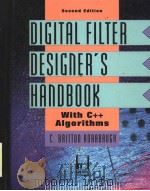
- DIGITAL FILTER DESIGNER'S HANDBOOK WITH C++ALGORITHMS SECOND EDITION
- 1997 MCGRAW-HILL
提示:百度云已更名为百度网盘(百度盘),天翼云盘、微盘下载地址……暂未提供。➥ PDF文字可复制化或转WORD
